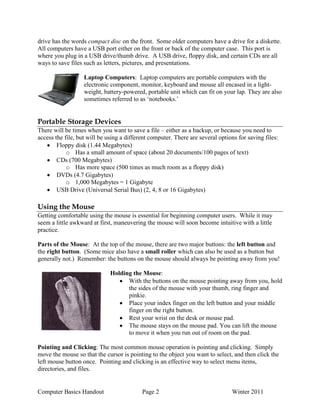This document provides a summary of basic computer concepts including hardware components, storage devices, using a mouse and windows. It discusses the computer case, monitor, keyboard, mouse and disk drives that make up hardware. Storage options include floppy disks, CDs, DVDs and USB drives. Instructions are given for using a mouse including parts, holding it, pointing, clicking, dragging and dropping. The desktop, start button, taskbar, windows and common window elements of the Windows operating system are outlined. Examples of software like Word and Excel are listed. Methods for toggling between programs and safely shutting down a computer are described.





